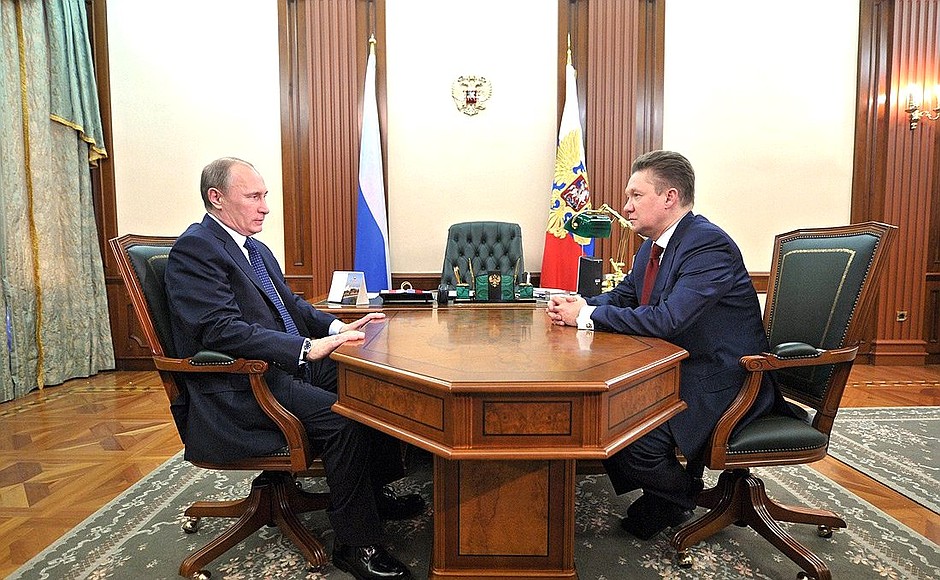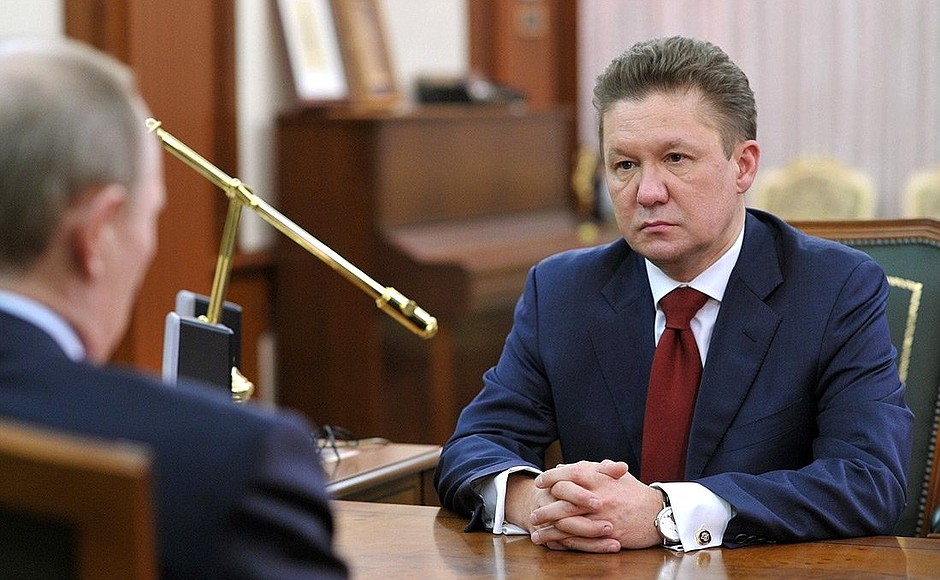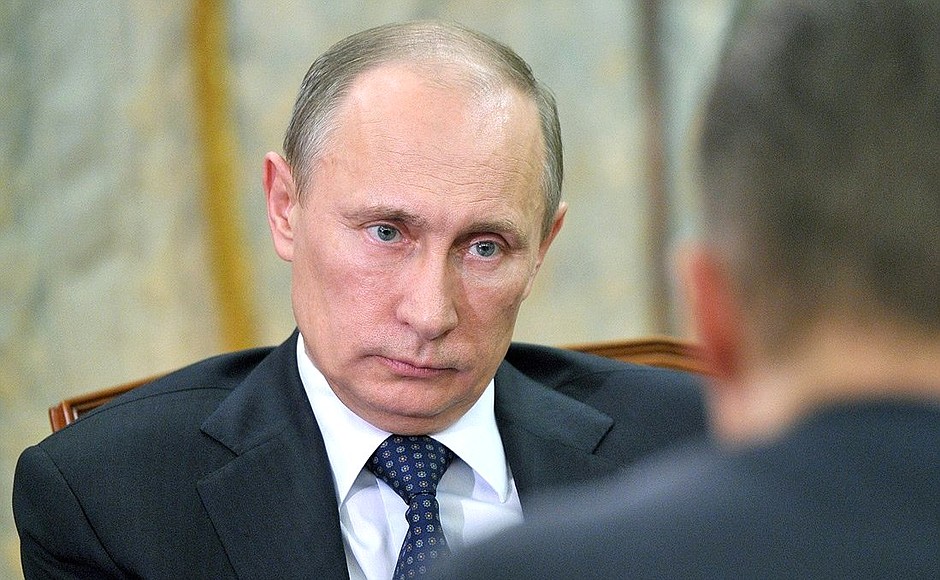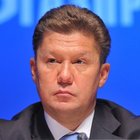The President also asked Mr Miller to continue drawing up the projects for the Yamal-Europe 2 gas pipeline and a branch gas pipeline to Kaliningrad Region.
* * *
President of Russia Vladimir Putin: Mr Miller, let’s discuss the gas transport system’s development. We have already discussed the system’s development at the domestic level, the work on linking up the pipeline systems in the European part of Russia, and the pipeline construction work that has already begun in the eastern part of the country.
You reported on the plans to link up the European system and the developing eastern gas transport system that will serve the needs of our consumers at home. Today, I’d like to hear about how work is going on developing the export pipeline routes.
The Nord Stream project is close to completion. I know that you are looking now with our British partners into building another pipeline specifically to take gas to Britain. In this context, I’d also like to hear about what is happening with the branch pipeline to Kaliningrad Region.
Another thing is that with all the work on the Nord Stream and South Stream projects, we have all but abandoned the Yamal-Europe 2 project. Work on South Stream has begun and is gathering pace now. However, I’d like you to return to the Yamal-Europe 2 project too. I know that you are in active discussions with our partners on this. This project would increase reliability of gas supplies to Poland, Slovakia, and Hungary.
But we realise that with the Nord Stream pipelines coming on line, the Yamal-Europe 2 project cannot simply be a copy of the Yamal-Europe 1 pipeline. My question therefore is what are the best options in your view for expanding our capacity in this area, and what have you agreed on with our partners?
chairman of the Management Committee of Gazprom Alexei Miller: As far as the Nord Stream and South Stream mega projects are concerned, Nord Stream was built in strict accordance with the project timetable. We built two pipelines and took the system to its design capacity of 55 billion cubic metres of gas in October last year.
As you instructed, we started South Stream’s construction last December. We are fully confident that the first section will be completed by December 2015, and we will start delivering gas to the European Union via Bulgaria. All four sections will be completed by December 2017, and the South Stream pipeline system will have capacity of 63 billion cubic metres.
As you noted however, there is still the issue of guaranteeing reliable and stable supplies to Central and Eastern Europe, to countries such as Poland, Slovakia and Hungary. In this respect, as you instructed, we have drawn up a project for a gas pipeline that will run from Belarus, given that transit via Belarus through the Yamal-Europe 1 pipeline is the best option in economic terms at the moment.
Gazprom currently has ownership of this gas transport system, and this is the most efficient route – in terms of logistics – for us to deliver gas to our customers in Europe.
Market analysis shows that we would be looking at a volume of around 15 billion cubic metres of gas. We have held talks at the corporate level with our partners in Hungary, Slovakia and Poland. We are ready to begin the preliminary feasibility studies and start work on the pre-investment phase.
There is an understanding that this project could come on line once the South Stream project is completed. It would be a continuation of the work that we are doing in general to guarantee more stable and reliable gas transit to the European Union countries.
As for the deadlines, we could be looking at 2018–2019. If we get the instruction, we will settle more precise deadlines, settle the exact route, and also work out the investment required of course. We already know for certain that a project of this type would be extremely effective. Our partners at the corporate level are very interested in working together on it.
Vladimir Putin: I understand that if this project goes ahead it would put an end to the concerns our Polish friends have had and would also ensure more reliable supplies to Hungary and Slovakia.
Alexei Miller: Yes, Mr President, supplies would be more reliable. In fact, reliability would be 100-percent guaranteed in this case because if we take Poland, for example, we would be delivering gas via Gazprom’s pipeline on the Polish border, and this would amount to essentially a transit-free route.
Vladimir Putin: What is happening with Kaliningrad Region?
Alexei Miller: You asked us to look at the options for building a branch pipeline to Kaliningrad Region. We did the studies and now have a favourable report on the feasibility of building a branch pipeline from either the first or second section of the Nord Stream system.
We held talks with the Kaliningrad Region authorities and met with the governor. We have settled on the supply volumes. The region needs a maximum volume of 4.6 billion cubic metres.
Currently, gas is delivered to the region via Lithuania. The volume supplied comes to 2.5 billion cubic metres a year. This means that we need to get 2 billion cubic metres delivered via one of the Nord Stream pipelines.
We met with the Nord Stream management. They say this is technically feasible. The next step would be to discuss the project with the Nord Stream shareholders and get their approval. We are continuing our talks with our foreign partners in Nord Stream and will report once we have the results.
Vladimir Putin: If any problems come up, this is also something that could be carried out when the third section that will deliver gas to Britain is built.
Alexei Miller: Yes of course.
Vladimir Putin: Absolutely no restrictions there. Work it through. I will send the according instruction to the Energy Ministry regarding the plans to bring units at the Baltic Nuclear Power Plant on line. We need to have a full picture of Kaliningrad Region’s energy supplies. We need to do this in order to develop the region’s energy system in full and have a clear and predictable view of the possibilities in this area, as this is important for developing the region’s economy in general over the coming future.
<…>



